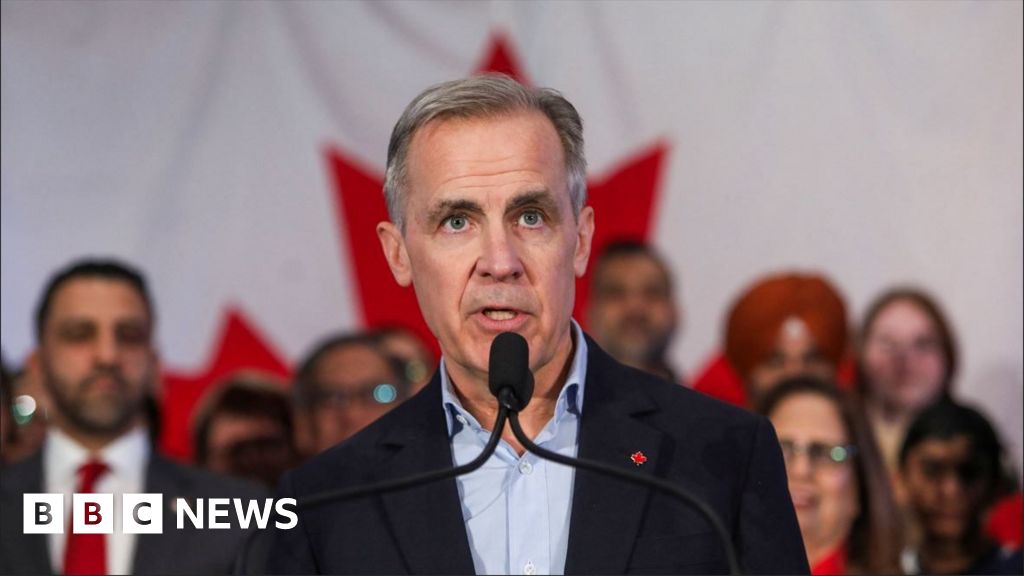- cross-posted to:
- [email protected]
- cross-posted to:
- [email protected]
Summary
Mark Carney, frontrunner for Canadian Liberal Party leadership and potential prime minister, stated Canada will stand up to a bully after Trump imposed 25% tariffs on Canadian imports.
Carney vowed to retaliate by matching the US tariffs dollar for dollar, asserting Canada would not cave in despite mounting pressure.
He criticized Trump for undermining trade agreements, warning that the tariffs would damage the US global reputation and economic stability.
Outgoing Prime Minister Trudeau promised a forceful, immediate response, emphasizing unity as Canada defends its economic interests, ensuring national prosperity.



That likelihood has dropped a lot. Liberals are seeing a significant uptick in recent polls, and Carney has a very positive approval rating (+13 was the latest number I saw). He’s a strong favourite to win the position, and he polls very well in hypothetical matchups against Pollievre right now.
The latest polls still show a blowout victory for the Conservatives:
https://newsinteractives.cbc.ca/elections/poll-tracker/canada/
I don’t think it’s at all likely that the Liberals could win another majority, even another minority. That sucks because the conservatives always wreck stuff when they win. But there’s this determined “things are bad, vote the current party out” mentality right now.
It’s not the current numbers in the polls you need to look at, it’s the direction of the trend. Over the last few weeks if you compare numbers from the same pollsters you see a very rapid move away from the Conservatives. The polls still show a blowout for them, and even if current movements continue, they’ll show a blowout for a while yet. FPTP voting systems produce very strong outcomes from very small differences, so it takes a while for trends in likely vote intention to translate into changes in seat counts. But if the current trends continue, you will see those seat counts change.
There are no guarantees of course, but also you need to keep in mind that Canadian politics are very different from US politics. Our polls tend to readjust strongly once an actual election is called. Polling outside of a campaign tends not to be as reliable an indicator of vote intention as it does in the US where they effectively have two year long elections.
Canadian politics also has a very reliable cycle where the conservatives get elected, stay around too long, get blown out in an election that the Liberals win. Then the liberals get elected, stay around too long, and get blown out in an election that the Conservatives win.
When Pierre Trudeau lost his popularity, John Turner took over for a few months, but then Mulroney’s conservatives blew him out of the water in the next election. When Mulroney became massively unpopular, Kim Campbell became PM for a few months until Chretien took over. When Chretien handed over to Paul Martin, he actually managed to win an election before it swung back to Harper and his Conservatives. The country is overdue for a swing back to the Conservatives. Changing the leader never works. Whoever becomes PM after a very unpopular leader quits gets a very short term.
Thinking this time is going to be different is just wishful thinking.
OK, but we’re talking about the next election, not the next ten years. And of the two examples you just offered, one of them was a case where the new leader won an election and stayed in for three more years before the other party got in.
And you used that to back up your claim that the Conservatives are guaranteed to win the next election. You see how that literally undercuts your own argument, right?
Personally, I’m not betting either way on how the next election is going to go. But that, in itself, is a drastic shift from where we were a few weeks ago when a Conservative victory was all but guaranteed. The current political reality has changed, that’s a simple and unavoidable fact. Whether it has changed enough is not something that anyone can predict at this point.